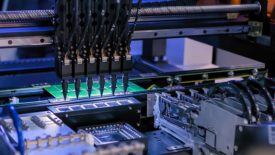Software
Learn more about the latest software automating, streamline, and controlling your quality processes.
ARTICLES
Software
Thanks to AI and machine learning, we are seeing new amounts of data change the landscape of the calibration process.
Read More
Sponsored Content
Getting Real: A Simple Way to Assess Process Capability Without Complex Assumptions
May 3, 2024
Software
Short Run SPC for Small Batch Manufacturing
Short run charts work for both variable and attribute data.
April 30, 2024
Software
How FMEA is Adapting Over Time, Part 2
There’s a growing understanding that not all manufacturing or production jobs are the same, and thus, the application of FMEA should vary accordingly.
April 15, 2024
Quality 101
Understanding the Fundamentals of a Manufacturing ERP System
The common purpose of all ERP systems is to enable operational excellence, profitability and growth.
April 11, 2024
Get our new eMagazine delivered to your inbox every month.
Stay in the know with Quality’s comprehensive coverage of the manufacturing and metrology industries.
SIGN UP TODAY!Copyright ©2024. All Rights Reserved BNP Media.
Design, CMS, Hosting & Web Development :: ePublishing









